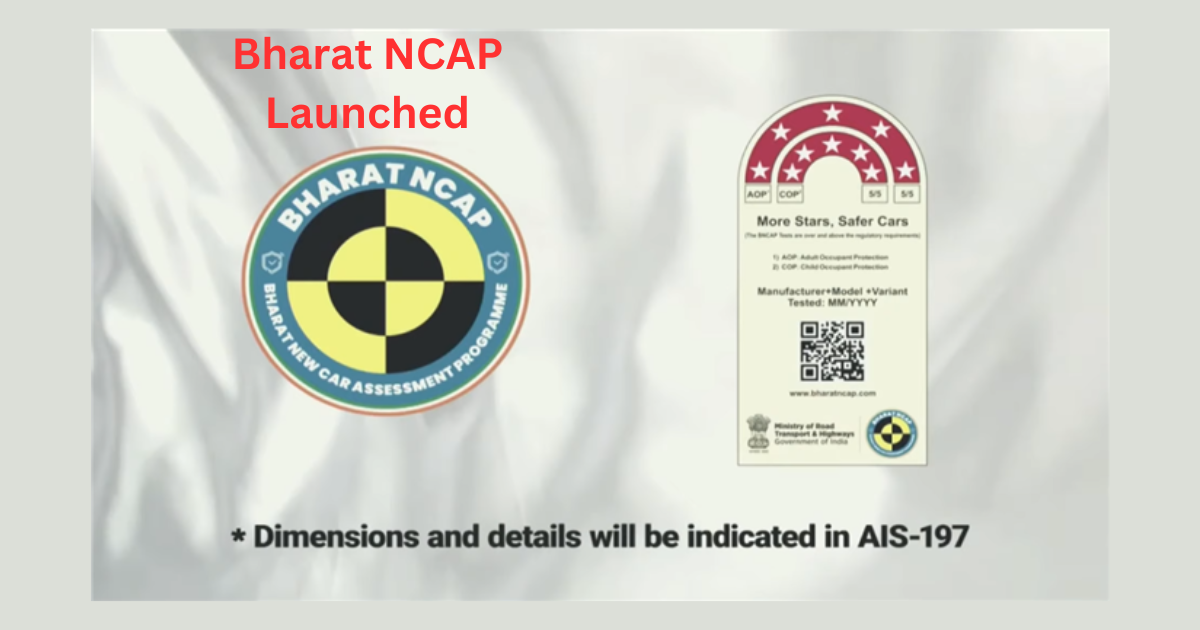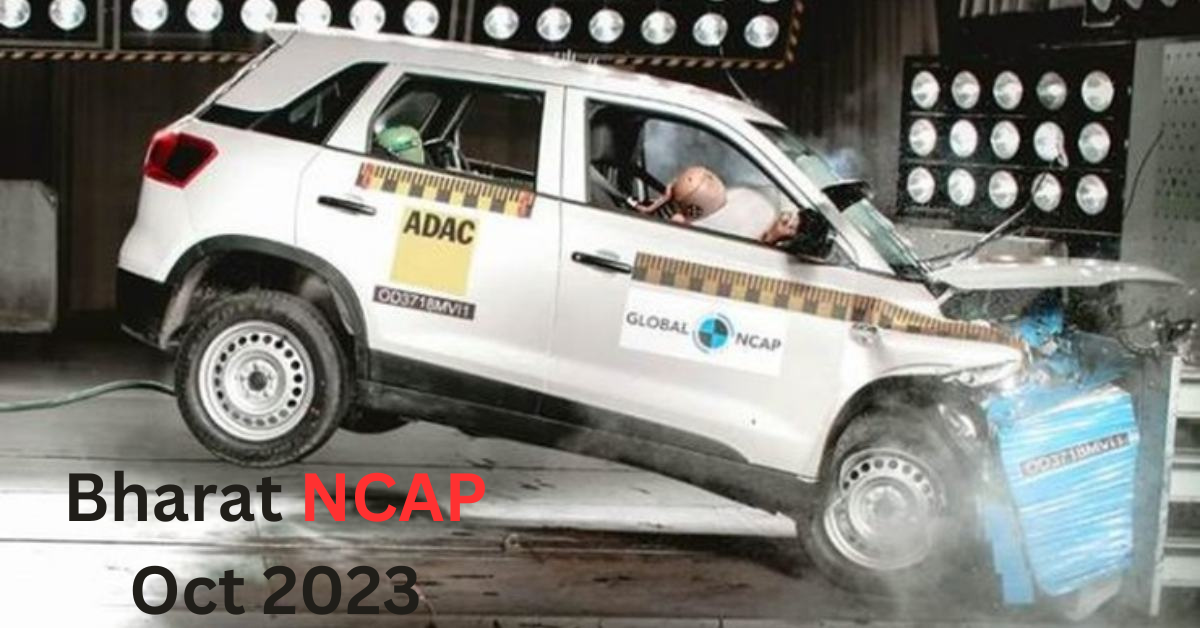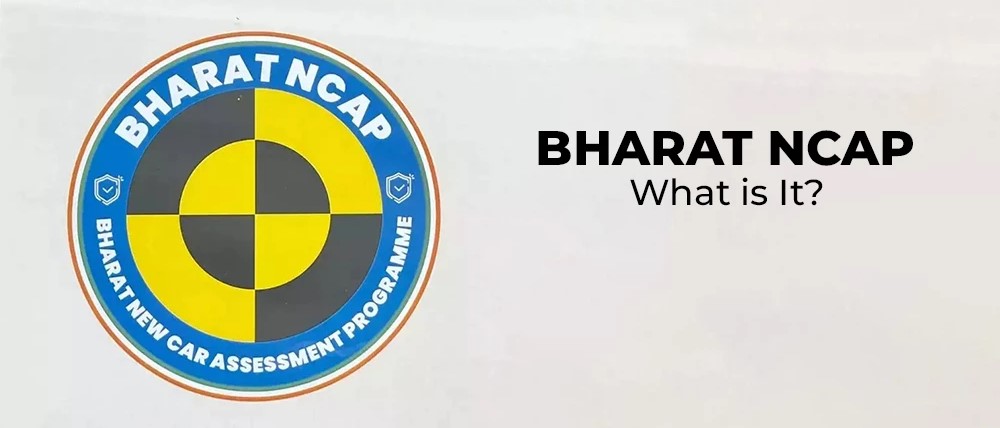What is Bharat Bharat NCAP :
Understanding Bharat NCAP :
A key government programme in India called Bharat New Car Assessment Programme, or Bharat NCAP, aims to raise car safety standards all over the nation. This programme, which was started in January 2015 in response to mounting concerns about road safety, attempts to educate consumers about the safety capabilities of automobiles sold in the Indian market.
The National Automotive Testing and R&D Infrastructure Project (NATRIP) and Bharat NCAP are both run by the Ministry of Road Transport and Highways (MORTH). Its main goal is to examine the safety of automobiles through in-depth tests and evaluations.
Vehicle crash testing, which consists of two primary types of tests: frontal offset crash tests and side impact crash tests, is one of the program’s essential elements. These tests imitate actual crash situations and gauge how well a car can shield its occupants from harm.
Additional safety elements that are evaluated by Bharat NCAP include airbags, seatbelt tensioners, anti-lock braking systems (ABS), electronic stability control (ESC), and child restraint systems. A higher star rating denotes greater safety performance, and it is based on the availability and efficacy of certain safety elements.
Bharat NCAP stands out for its dedication to transparency. The programme makes the test findings for every car available to the public by publishing them. This openness enables customers to make knowledgeable decisions, motivates producers to put safety first, and ultimately results in safer roads for all Indians.
Bharat NCAP is an important effort that places a high priority on vehicle safety in India. It does so by performing in-depth tests, assessing safety features, and offering clear ratings to help consumers make safer car purchases.
How Does Bharat NCAP Work?
The Indian government’s innovative Bharat New Car Assessment Programme (Bharat NCAP) was created to evaluate and promote the nation’s automobile safety standards. The programme is run using a methodical evaluation procedure that includes several crucial elements.
The main process used by Bharat NCAP comprises putting numerous car types through rigorous crash tests. Frontal offset crash testing and side impact crash tests are the two main types of crash tests used. These tests imitate actual collision events and evaluate a vehicle’s occupant protection capabilities.
Bharat NCAP also assesses the availability and performance of safety features such as airbags, seatbelt tensioners, anti-lock braking systems (ABS), electronic stability control (ESC), and child restraint systems in automobiles. Based on the accessibility and usefulness of these characteristics, points are given.
The programme then gives each car a star grade depending on how well it performed in crash tests and whether or not it had safety features. Higher star ratings signify better safety performance, assisting consumers in making knowledgeable selections when buying a car.
In the end, Bharat NCAP’s open evaluation approach empowers both buyers and sellers, promoting a culture of safety-conscious auto manufacturing and consumption in India. This programme has been essential in raising vehicle safety standards and securing everyone’s safety on Indian roadways.
Stay tuned with teamautoexpert for more updates and for the latest auto news and reviews.
How Bharat NCAP Work?
- Testing Procedures: Bharat NCAP conducts a series of stringent tests on vehicles to assess their safety performance. These tests primarily focus on evaluating the crashworthiness and safety features of the vehicles.
- Crash Tests: One of the key components of the Bharat NCAP evaluation process is the crash test. Two types of crash tests are conducted:
a. Frontal Offset Crash Test: In this test, a vehicle is driven at a specified speed into a deformable barrier that simulates a head-on collision. The resulting data helps assess how well the car protects its occupants in a frontal impact.
b. Side Impact Crash Test: This test evaluates a vehicle’s ability to protect occupants in a side collision, which is often a serious concern in urban traffic.
- Evaluation of Safety Features: Bharat NCAP also examines the presence and effectiveness of safety features in vehicles. These features include airbags, seatbelt pre-tensioners, anti-lock braking systems (ABS), electronic stability control (ESC), and child restraint systems. Vehicles are awarded points based on the availability and effectiveness of these features.
- Star Rating System: Bharat NCAP assigns a star rating to each vehicle based on its performance in crash tests and the presence of safety features. A higher star rating indicates better safety performance. For instance, a 5-star rated vehicle is expected to provide a higher level of safety than a 3-star rated one.
- Public Disclosure: Perhaps the most crucial aspect of Bharat NCAP is its transparency. The program publishes the results of all tested vehicles, making them accessible to the public. This empowers consumers to make informed decisions when purchasing a car, encouraging manufacturers to improve vehicle safety.
- Continuous Improvement: The program periodically revises its standards to keep pace with technological advancements and global best practices. This encourages automakers to innovate and enhance vehicle safety continuously.
Impact of Bharat NCAP :
The impact of Bharat New Car Assessment Programme (Bharat NCAP) on the Indian automotive landscape has been substantial and far-reaching since its inception in 2015.
- Consumer Awareness: Bharat NCAP has played a pivotal role in raising awareness among Indian consumers about the importance of vehicle safety. The program’s transparent star rating system has made safety information accessible, empowering buyers to prioritize safety when making purchasing decisions.
- Industry Response: Automakers have responded positively to Bharat NCAP’s evaluations. To achieve higher star ratings, manufacturers have been prompted to incorporate advanced safety features into their vehicles, leading to the widespread adoption of technologies like airbags, anti-lock braking systems (ABS), and electronic stability control (ESC).
- Regulatory Influence: Bharat NCAP has had a significant influence on government policies and regulations regarding vehicle safety standards in India. The program has contributed to the formulation of stricter safety norms, driving manufacturers to improve safety across their entire product lines.
- Safer Roads: Perhaps the most crucial impact of Bharat NCAP is its contribution to safer roads in India. By promoting the production and purchase of safer vehicles, the program has played a vital role in reducing the number of fatalities and injuries resulting from road accidents.
What is the difference between Bharat NCAP and global NCAP?
The Global, Latin, and ASEAN NCAPs share a similar set of tests involving frontal offset deformable impacts, side impacts, pole impacts, and whiplash tests. The Bharat NCAP focuses on offset frontal impact, full frontal impact, side impact, and pole side impact tests.

Bharat New Car Assessment Programme (Bharat NCAP) and Global New Car Assessment Programme (Global NCAP) are two distinct vehicle safety assessment programs, each with its own set of objectives and characteristics. Here are the key differences between them:
- Scope and Geography:
- Bharat NCAP is specifically tailored to assess and promote vehicle safety in India. It operates within the Indian automotive market and evaluates vehicles sold in India.
- Global NCAP is an international initiative that assesses vehicle safety on a global scale. It collaborates with various countries and regions, including Latin America, Southeast Asia, and Africa, to evaluate vehicles sold in those markets.
- Focus on Indian Market:
- Bharat NCAP is primarily focused on addressing the unique safety challenges and requirements of the Indian market, considering factors such as road conditions, traffic patterns, and consumer preferences.
- Global NCAP takes a broader approach, working with multiple countries to raise awareness about vehicle safety globally. It provides a platform for countries to establish their own NCAPs and share best practices.
- Crash Test Standards:
- Bharat NCAP employs specific crash test standards that align with Indian road safety conditions. It conducts tests such as frontal offset and side impact tests.
- Global NCAP sets more universal crash test standards that are used across different regions, allowing for consistent evaluation of vehicles worldwide.
- Safety Ratings:
- Bharat NCAP uses a star rating system to rate vehicles based on their performance in crash tests and the presence of safety features. A higher star rating indicates better safety performance.
- Global NCAP also uses a star rating system, and its ratings are often used to compare the safety of vehicles across different countries and regions.
- Regulatory Influence:
- Bharat NCAP has influenced Indian government policies and regulations regarding vehicle safety standards, leading to the implementation of stricter safety norms in the country.
- Global NCAP’s influence extends to multiple countries, fostering a global dialogue on vehicle safety and encouraging the adoption of safer technologies worldwide.
Is Bharat NCAP mandatory?
The Bharat New Car Assessment Programme (Bharat NCAP) was not obligatory for Indian automakers as of my most recent knowledge update in September 2021. Instead, it ran as a voluntary programme with the objective of evaluating and advancing automotive safety standards. Although it was not a legal necessity, automakers were encouraged to take part in the programme and have their vehicles inspected for safety.
It’s important to remember that rules and policies put in place by the government might change over time. The Indian government has been attempting to increase road safety, and Bharat NCAP’s promotion of safer automobiles was essential in this effort. There have been conversations about mandating a few safety measures for cars, but the details may change.
I suggest contacting the Ministry of Road Transport and Highways (MoRTH) or other pertinent government agencies to find out the most recent details regarding whether Bharat NCAP has been made mandatory or if there have been any changes made to the laws governing vehicle safety testing in India. You can also keep up with any changes in this respect by reading the most recent news and official statements, as regulations and policies may have changed since my previous knowledge update.
What is the basis of NCAP rating?
What is the difference between 4 star and 5 star NCAP?
Which Indian car has best safety rating?
- Skoda Kushaq. Skoda Kushaq and Volkswagen Taigun are the latest models to have bagged top honours from Global NCAP. …
- Mahindra XUV700. …
- Mahindra Scorpio-N. …
- Mahindra XUV300. …
- Tata Punch. …
- Tata Altroz. …
- Tata Nexon. …
- Mahindra Thar
Conclusion
Bharat NCAP plays a crucial role in improving vehicle safety in India. By subjecting cars to rigorous crash tests and evaluating safety features, the program provides consumers with valuable information that empowers them to make safer choices. As the automotive industry continues to evolve, Bharat NCAP’s commitment to enhancing vehicle safety remains steadfast, ultimately making Indian roads safer for all.
Frequently Asked Questions (FAQ) :
1.What is the Bharat NCAP safety rating?
With Bharat NCAP into effect, India will become the fifth country in the world to have its own car crash test rating system. Cars, tested under this programme, will carry a Bharat NCAP logo as well as a sticker, showcasing its rating. Under the Bharat NCAP programme, the cost of testing a car is around ₹ 60 lakh.
2.What is the full form of Bharat NCAP?
The Bharat New Car Assessment Program, usually known as the Bharat NCAP, is a proposed New Car Assessment Program for India. Cars sold in the country will be assigned by star ratings based on their safety performance.
3.What is the difference between Bharat NCAP and global NCAP?
The Global, Latin, and ASEAN NCAPs share a similar set of tests involving frontal offset deformable impacts, side impacts, pole impacts, and whiplash tests. The Bharat NCAP focuses on offset frontal impact, full frontal impact, side impact, and pole side impact tests
4.Who started NCAP?
Bharat NCAP was launched by Minister of Road Transport and Highways, Nitin Gadkari where the government aims to improve road safety by raising the safety standards of motor vehicles up to 3.5 tonnes in India.
5.Who created NCAP?


